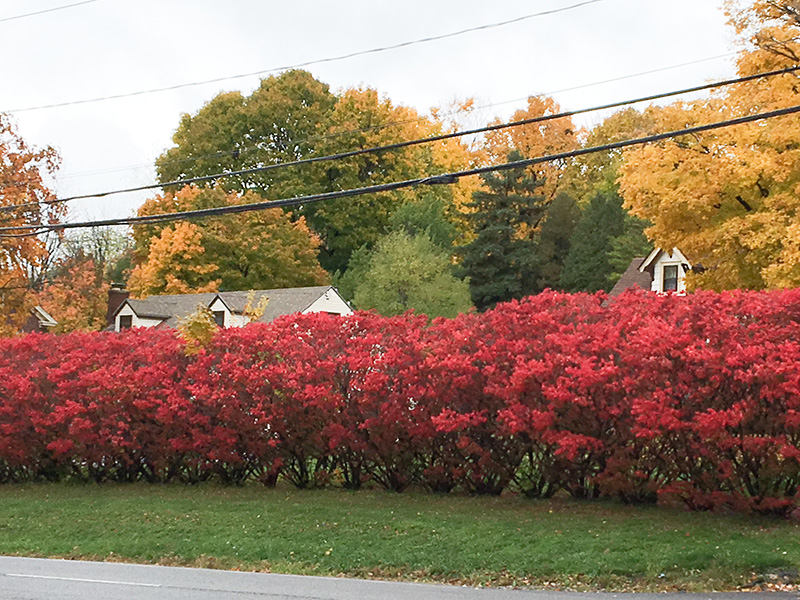
Invasive woody plants growing in our home landscapes are especially problematic for our natural areas. These burning bushes will impact natural areas far from this suburban property.
Here are some examples of plants we used to have in our own yard. Removing these plants was step 1 when we started transforming our yard into a habitat garden many years ago.
Burning bush (Euonymus alatus)
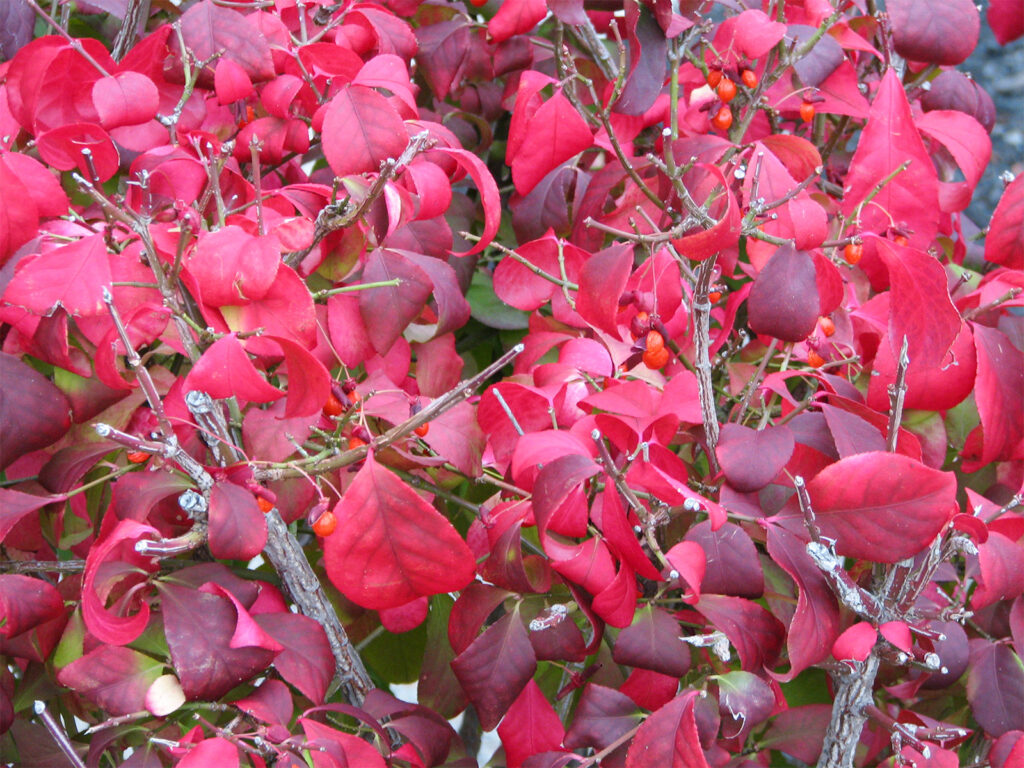
Like most people in the suburbs, we planted a burning bush. We got rid of it as soon as we learned it was a non-native invasive plant.
(Note: This isn’t our burning bush — we didn’t have it long enough a photo of it …)
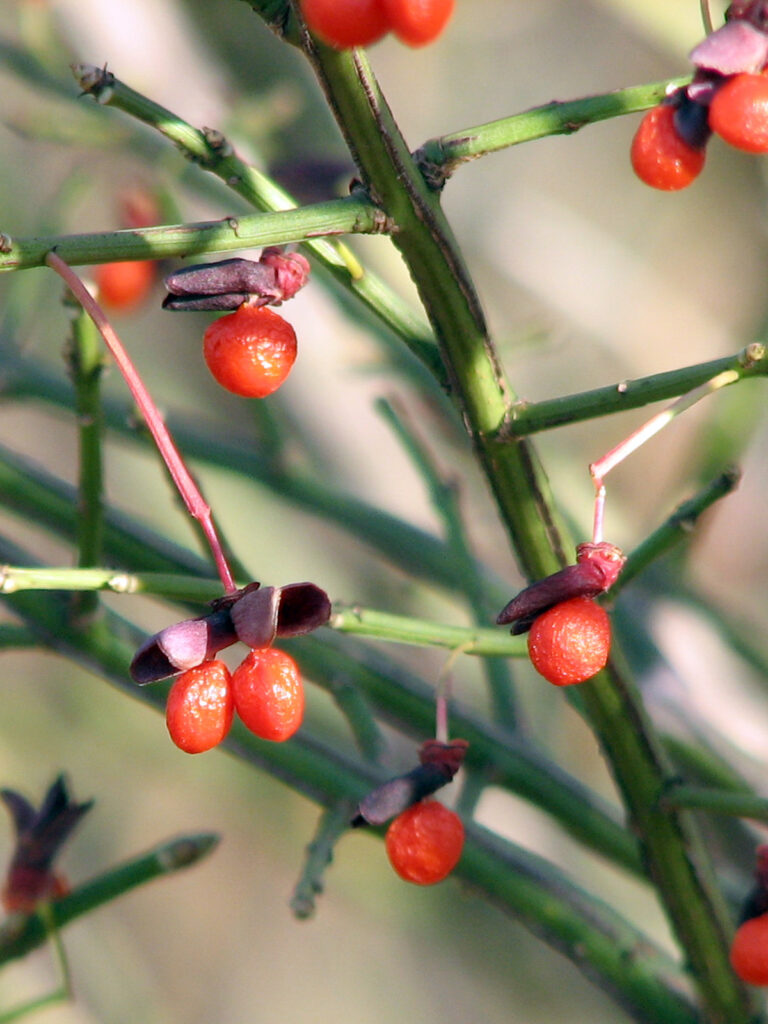
This plant, more than any other (except perhaps buddleia) is the plant people refuse to believe is invasive. (And as you can see in the introductory photo, they plant a lot of it!) It’s hard to believe, but they sometimes even become quite hostile when I suggest it causes problems.
They say that it doesn’t travel around their yard. They don’t realize that birds eat the berries and deposit them in the woodlands through their droppings. They say they don’t see it invading woodlands.
Perhaps it’s because in shady woodlands, it may not always develop its characteristic red color. It isn’t “burning” so people don’t recognize it as such.
Still, though, it’s displacing plants that would otherwise provide important habitat.
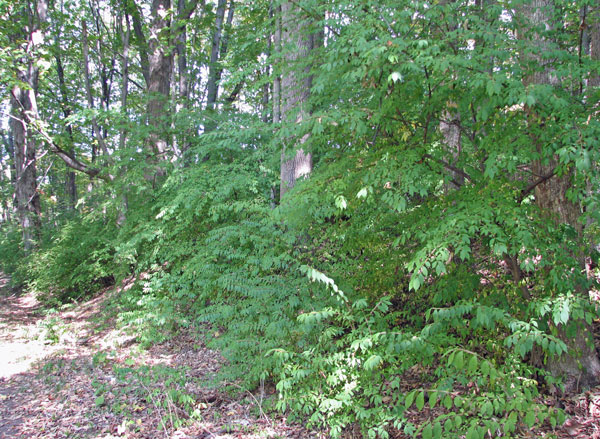
We now have beautiful fall red color from our blueberries, itea, and chokeberries, among others.
- Learn more:
- Invasive information on burning bush
- Homegrown National Park: Why is burning bush considered an invasive? – short video
Japanese barberry (Berberis thunbergii)
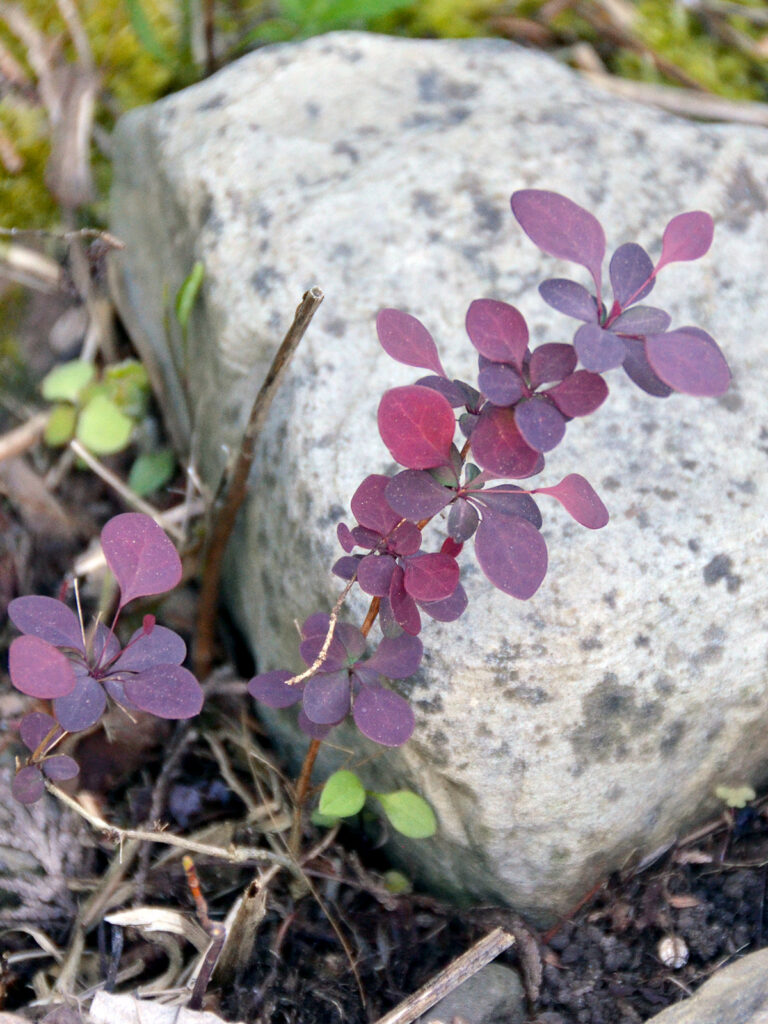
This Japanese barberry seedling appeared in our yard twenty years after we had removed our barberries. How it got there I don’t know.
Did the seeds from that plant finally germinate? Or did seeds from another barberry in the neighborhood drift to my yard?
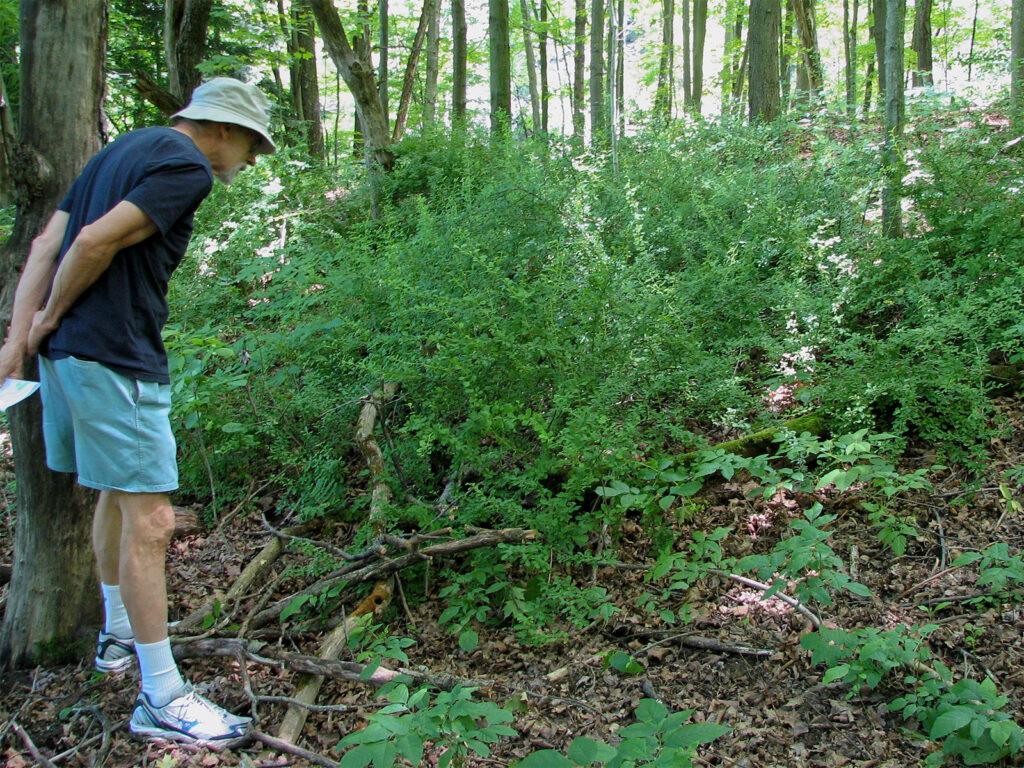
It’s sad to see how much land barberries can overtake. This land in our local nature center’s woods could otherwise be supporting the kinds of shrubs and other native plants that are so important to our native wildlife.
It seems to be difficult for people to believe that their own landscape plants could be the source of an infestation like this. After all, they don’t see their plants picking up and moving. They may not see seedlings of their plants invading their own yard.
But what they don’t see are the birds eating the berries and pooping out the seeds, along with their own little packets of “fertilizer” (i.e. the bird poop).
I saw this sign at a prominent botanic garden. Yep, it “Attracts birds” but let’s not blame the birds for this scourge!
I lost a lot of respect for this organization after seeing this sign (though they may have changed their ideas since then).
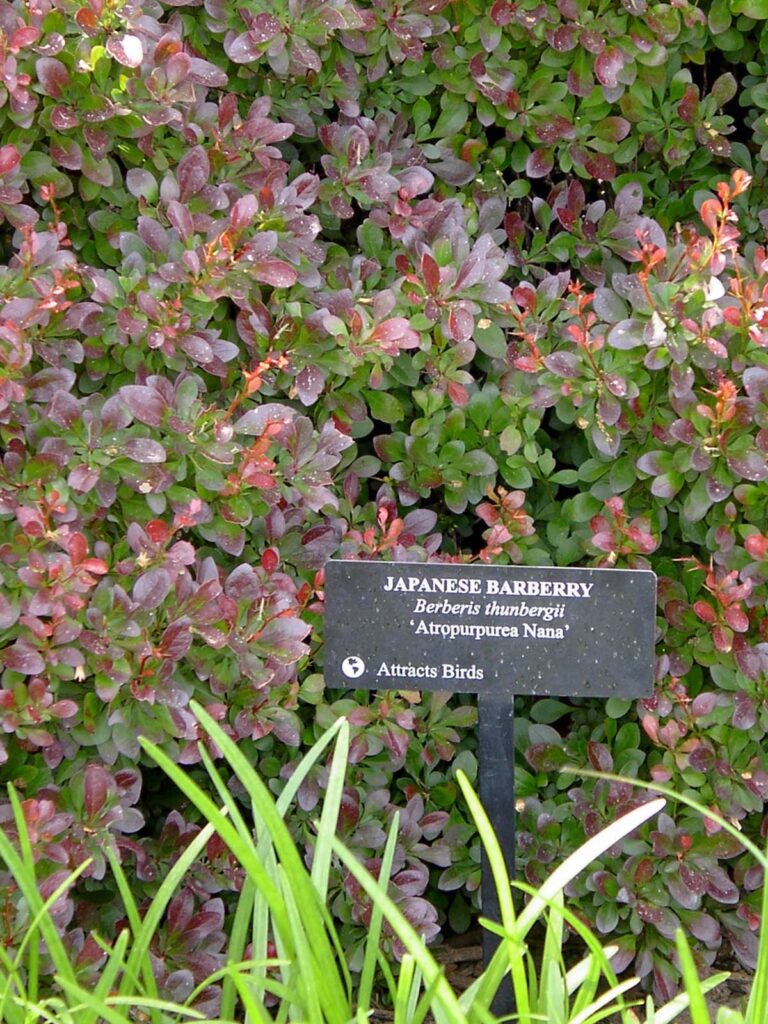
Invasive information on Japanese barberry. Worse, it is now known to be a threat to public health since it harbors ticks.
Butterfly bush (Buddleia davidii)
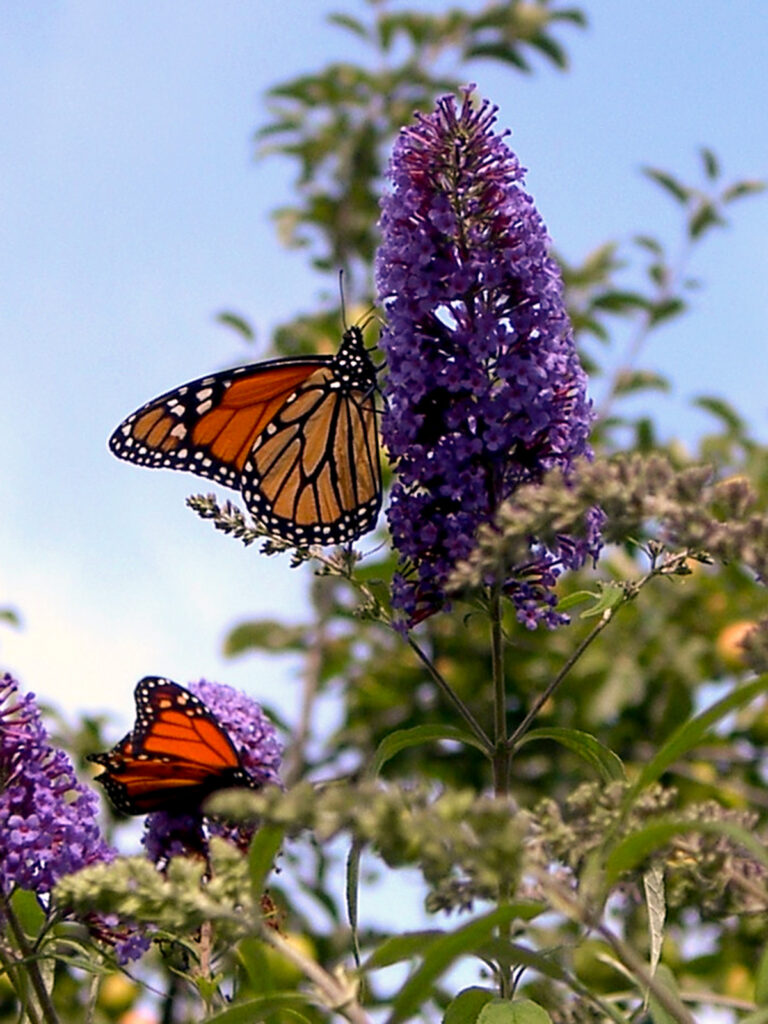
Of course, it doesn’t help that almost any article on creating butterfly gardens includes this plant. Why not? If you’re creating a butterfly garden so you can sit back and enjoy watching butterflies flocking around your buddleia, I guess it makes sense.
If, on the other hand, you’re interested in what’s best for the butterflies and for preserving that enjoyment for our grandchildren and beyond, it makes no sense whatsoever.
Butterflies need larval host plants for their caterpillars. Nectar plants are easy to provide; there’s no need for this plant.
Here are some alternatives to buddleia and the reasons we eradicated our buddleias long ago.
Multiflora rose (Rosa multiflora)
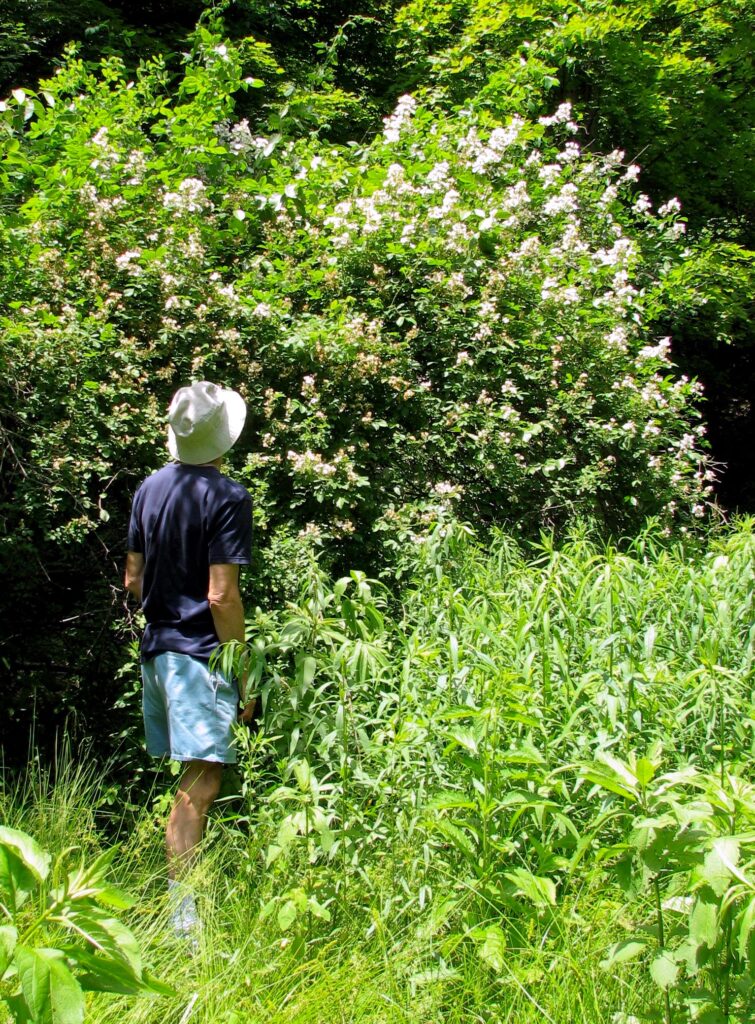
Multiflora rose is another plant that’s widespread in our local nature center and in many other places.
The difference between multiflora rose and the Japanese barberry that’s also invading these woods is that the multiflora rose WAS PLANTED ON PURPOSE — hard to believe, but at the time, people thought they were doing a good thing.
To understand the bigger picture, please read Sara Stein’s comment on plants like these in the Reflections below.
It’s also hard to believe that long ago I found a seedling of a plant that — lo and behold! — produced little white roses. I actually coddled this free rosebush for a few years until I finally realized what it was. Then, coddling it no more, I ripped it out by its little roots!
Invasive information on multiflora rose
Japanese honeysuckle (Lonicera japonica)
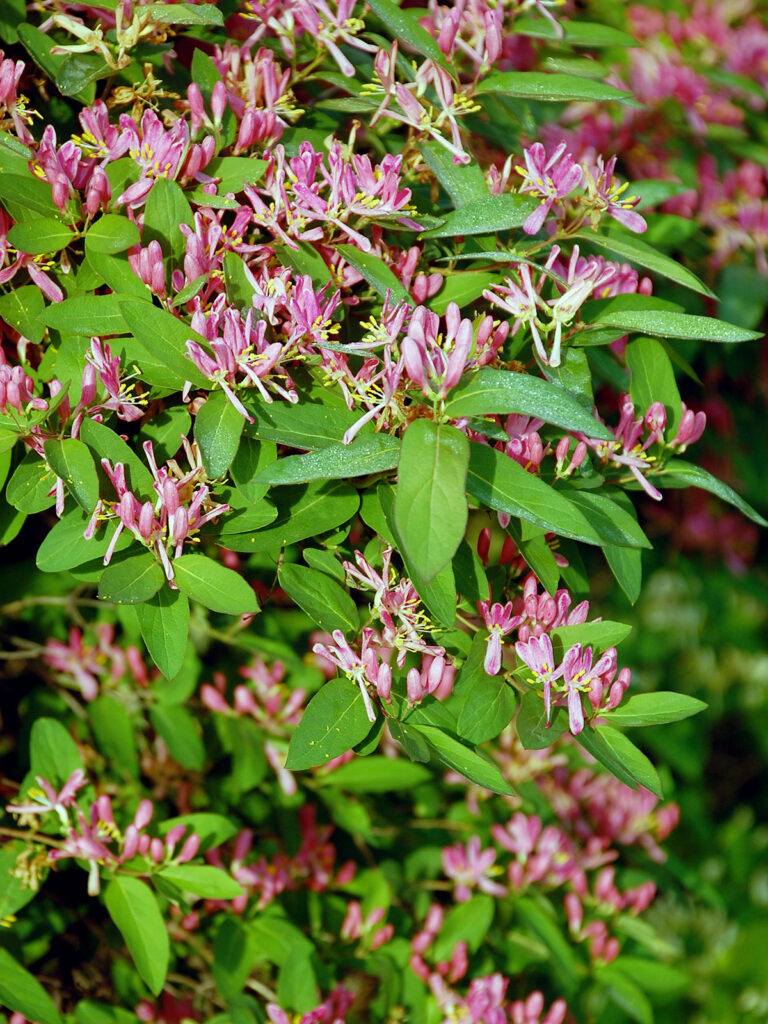
A large Japanese honeysuckle was in our yard when we moved in. This is another plant that I coddled for a number of years, thinking it was a “free” flowering shrub. When we learned about invasive plants, we got rid of it.
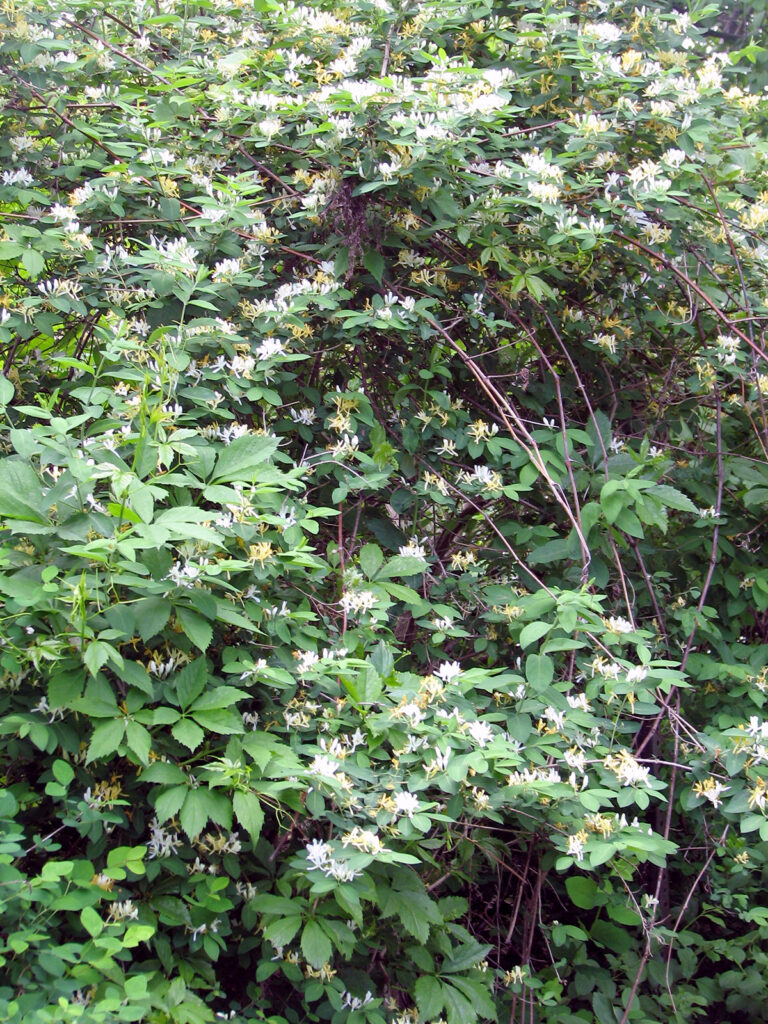
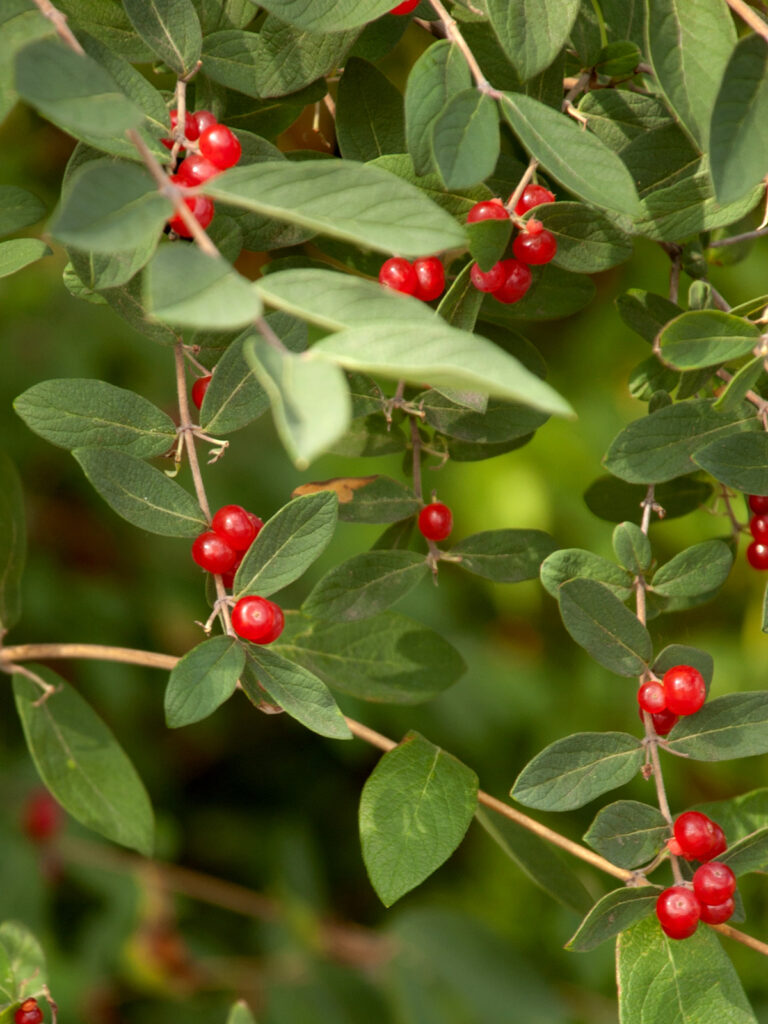
Invasive information on Japanese honeysuckle
Japanese knotweed (Polygonum cuspidatum)
This isn’t a woody “shrub” (since it dies back and regrows each year), but it’s certainly the size of a shrub!
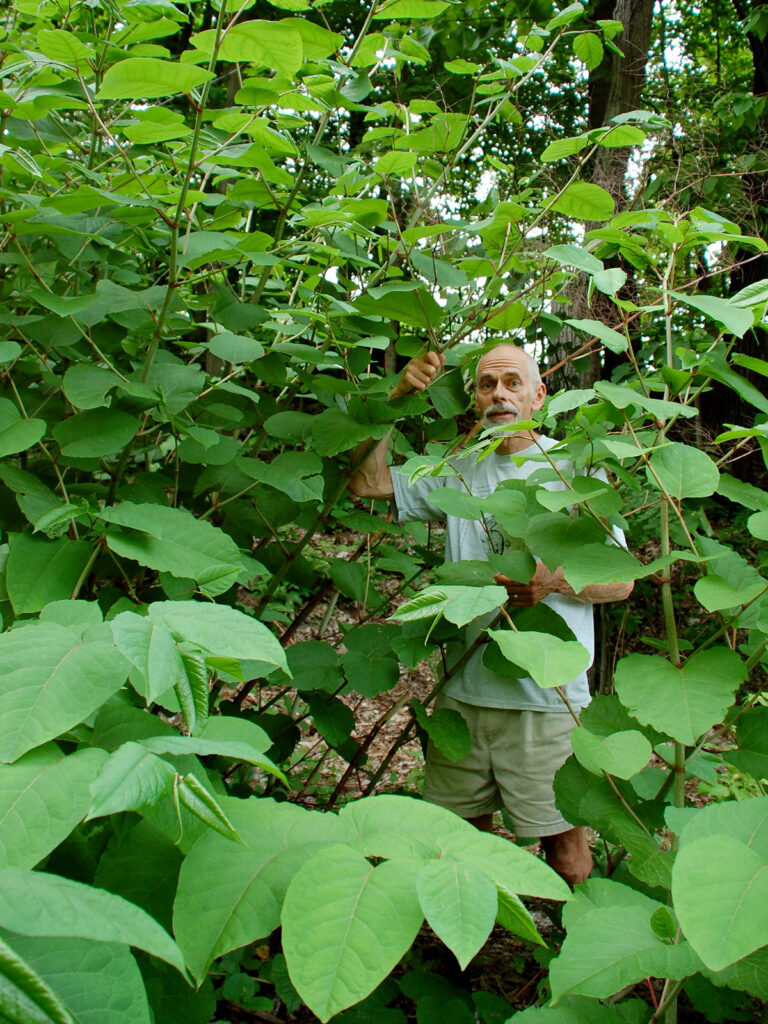
Fortunately, we never planted this in our yard, but this photo of Japanese knotweed was taken along a road not far from our house (in connection with an article I wrote that appeared in Woodlands and Prairies magazine).
It could have been taken almost anywhere in CNY, though. It’s everywhere.
Amazingly, some people must think it’s attractive. (We actually saw a cultivar of this plant listed on a supposed “habitat garden” tour in another city!) And others consider it one of those “weedy native plants” we have to guard against. It’s hard to know how our community will ever get rid this nasty non-native plant! BUT at least we can stop planting cultivars of it!
Invasive information on Japanese knotweed
Resources
- Citizens for Lexington Conservation:
- Science Daily:
- Penn State Extension:
Videos
- Sustainable Saratoga:
- Beauty IS the Beast – video describing how burning bush spreads into the forest
Reflections
Sorry, birders: I must now hit this nerve. The fact that a plant feeds birds does not vindicate its use. It is true that without the northward spread of multiflora roses, we Yankees would not enjoy the song of mockingbirds on moonlit nights. But if those rose hips enable one bird to make it through our northern winters, the meadows that might otherwise flourish where multifloras have invaded would support many more bird species on the myriad insects they provide in spring and summer, the variety of the grains and flower seeds they offer in the winter, and the rodent diet they serve up throughout the year. One slaps the label “weed” on a species, not because it is without virtue, but because whatever virtues that plant may have cannot outweigh the countless virtues of the entire habitat it displaces.
~ Sara Stein, Planting Noah’s Garden, pp. 172-173
